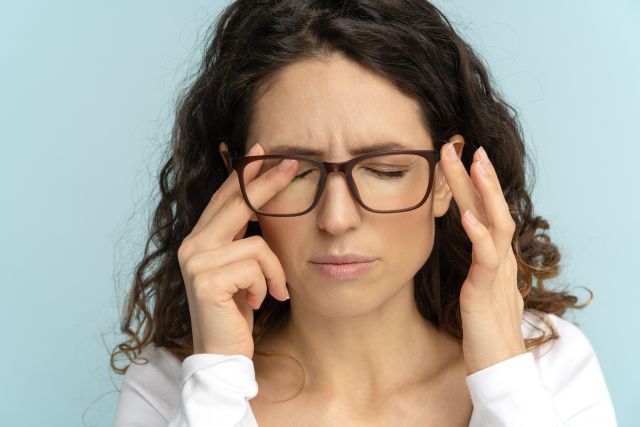Dry eye disease (also called dry eye syndrome) is a condition that develops when the eyes do not make enough tears to stay lubricated. It is more common as people age and more common in women.
Dry eye disease can cause a variety of uncomfortable symptoms, including a stinging or burning sensation, sensitivity to light, redness and irritation, blurred vision, a gritty feeling, and eye pain or discomfort. It can also cause complications—especially when left untreated—including infections and damage to the surface of the eye.
Dry eye flares are also common. Flares are episodes where dry eye symptoms get noticeably worse. These episodes can be frustrating, especially when they happen unexpectedly.
There are therapies that can help ease dry eye symptoms and prevent complications. There are also therapies that can ease and shorten flares when they occur.
In addition to addressing symptoms and easing flares, it is also important that a treatment plan addresses the underlying cause of dry eye disease.
What can cause dry eye disease?
Dry eye disease affects a wide variety of people and has many different causes. Living or working in a dry or windy environment, exposure to smoke (including cigarette smoke), allergies, wearing contact lenses, and having had eye surgery can all cause or contribute to dry eye disease.
Dry eye disease can also occur as a result of having another health condition. Some health conditions associated with dry eye disease include:
- Shingles. Caused by a reactivation of the herpes zoster virus (the same virus that causes chicken pox), shingles is a painful, blistering rash. While it typically occurs on the torso, it can also occur in other areas of the body—including the eyes. Dry eye disease, vision impairment, and other complications have been associated with shingles in and around the eye.
- Diabetes. One of the most common health conditions in the world, diabetes is a metabolic disorder that interferes with a person’s ability to use blood glucose (blood sugar). It is associated with many health complications, including many complications that affect the eyes. Dry eye disease is prevalent among people who have diabetes. Diabetes is also one of the leading causes of blindness worldwide.
- Sjogren’s syndrome. This is an autoimmune disease where the immune system attacks and damages saliva and tear glands, causing dry mouth and dry eyes.
- Rheumatoid arthritis. RA is a type of inflammatory arthritis where the immune system attacks and damages the joints. RA can also affect the eyes, interfering with tear production.
- Vitamin deficiency. Your eyes depend on many different nutrients to remain healthy. Vitamin D and vitamin A deficiencies have been associated with dry eye disease.
- Bell’s palsy. This is a condition where one side of the face becomes weakened or paralyzed due to nerve damage. The cause is unknown. It can result in the eye being unable to close, which can lead to dry eye.
Dry eyes can also be a side effect of some medications. These include allergy and cold medications, hormonal birth control, antidepressants, anti-anxiety medications, medications to lower blood pressure, and medications to treat acid reflux.
Working with your healthcare provider
If you experience dry eye symptoms, talk to a healthcare provider. This may be a healthcare provider that specializes in treating vision problems or diseases that affect the eyes, or it may be a healthcare provider you are already seeing, such as a primary care provider or a specialist overseeing treatment for an existing health condition.
When you visit your healthcare provider, be prepared to discuss your medical history. It’s also helpful to bring a list of medications you take, including any vitamins, nutritional supplements, and herbal supplements.
This information can help your healthcare providers identify what is contributing to dry eye symptoms and help you find the most appropriate treatment.






